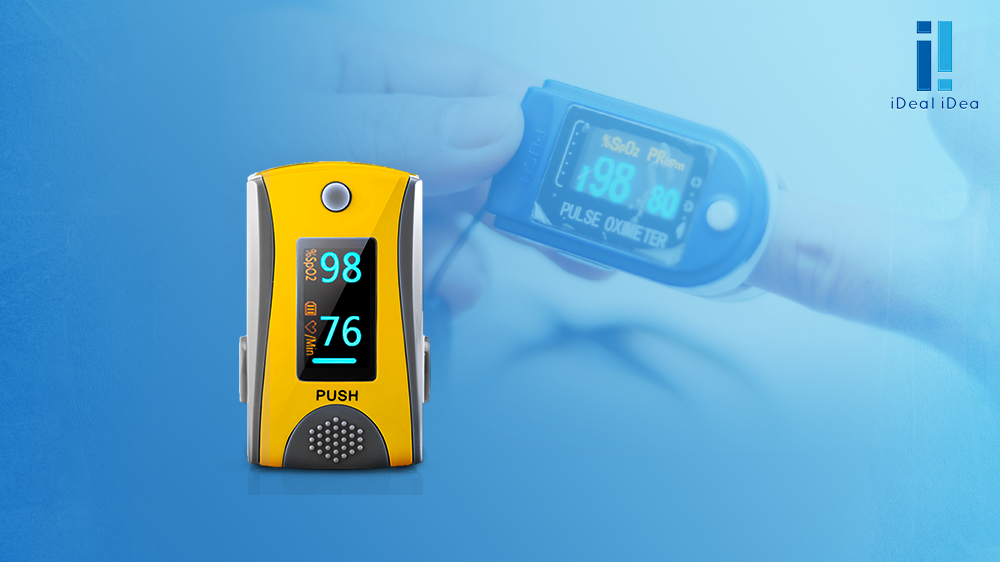Measuring blood oxygen levels is one of the most important tools for monitoring health, especially for patients with respiratory diseases such as asthma and chronic obstructive pulmonary disease. A fingertip oximeter is an effective and easy-to-use way to monitor oxygen levels at home. In this article, we will discuss the benefits of using an oximeter, as well as how to choose the right device for you.
1. To monitor the development of the health condition
Respiratory diseases such as asthma and chronic obstructive pulmonary disease (COPD) cause fluctuations in blood oxygen levels. Using a fingertip oximeter , patients can accurately track the improvement or deterioration of their health condition, reducing the need for frequent visits to the doctor. This device helps prevent the worsening of health conditions and enhances accurate monitoring of health status.
2. To determine the need for emergency medical care.
A sudden drop in blood oxygen levels may indicate the need for immediate medical intervention, such as in cases of sudden pulmonary embolism or acute pneumonia . With the M70 , you can quickly identify these changes, helping you take appropriate action quickly and avoid potential health risks.
3. To improve treatment management
Continuous monitoring of blood oxygen levels enables doctors to adjust treatment plans based on accurate data, improving the patient’s quality of life. The oximeter provides a means of monitoring the effectiveness of treatments and reducing respiratory distress, which contributes to improved medical treatment outcomes.
4. For awareness and education
Using a fingertip oximeter at home increases awareness among patients and their families about the importance of measuring blood oxygen levels . This awareness enables patients to understand how to deal with fluctuations in oxygen levels and deal with potential problems early.
Recommended Device
For a convenient and accurate blood oxygen measurement experience , we recommend the M70 . This device is accurate and easy to use, making it the ideal choice for effectively monitoring your blood oxygen levels and heart rate . Invest in your health and the health of your loved ones by having this device in your home.
How to Choose the Best Blood Oxygen Monitor: Criteria and Tips
With the increasing interest in health and monitoring health conditions at home, a blood oxygen meter has become an essential tool for many people, especially those suffering from respiratory diseases . Choosing the right device can be a difficult task due to the many options available. Here are some basic criteria for choosing the ideal device:
1. Accuracy and reliability
The most important criterion to consider when choosing an oximeter is its accuracy. Make sure the device is registered with the FDA to ensure the safety and reliability of the medical device. Reading user reviews and experiences can help you ensure the quality of the device.
2. Ease of use
The oximeter should be easy to use, especially for people who are not medical professionals. Choose one that has a clear, easy-to-read display and comes with simple instructions on how to use it.
3. Measurement speed
Make sure the oximeter provides fast readings, as speed in getting results is critical in emergency situations. A device like the M70 provides instant results, helping you make decisions quickly.
4. Device size and design
Choose an oximeter that is small and lightweight, making it easy to carry and use anywhere. The ergonomic design helps you use the device for long periods without strain.
5. Additional benefits
Some devices offer additional features such as heart rate measurement , saving previous readings, and connecting to smartphones via dedicated apps. Choose the device that offers the features that match your health needs.
6. Battery life
Make sure your oximeter has a long-life battery or can be easily recharged. This ensures that you don’t have to change batteries frequently, saving you time and effort.
Tips for using a blood oxygen meter
- Follow the instructions : Read the user manual carefully and make sure to follow the instructions exactly to get correct readings.
- Stability during measurement : Make sure to remain still and not move while using the device to avoid getting inaccurate readings.
- Check the device regularly : Check and maintain the device regularly to ensure that it is working properly.
- Avoid excessive lighting : Avoid using the device in places with strong lighting or under direct sunlight, as this can affect the accuracy of the readings.
- Consult a doctor : If you notice any abnormal changes in the readings, consult a doctor immediately.
Conclusion
Choosing the ideal blood oxygen meter requires considering several criteria to ensure accuracy and comfort in use. By following the tips and criteria mentioned, you can find the device that meets your needs and helps you monitor your oxygen levels effectively. For more information about the recommended oximeter , you can visit the attached link and discover its many features.

